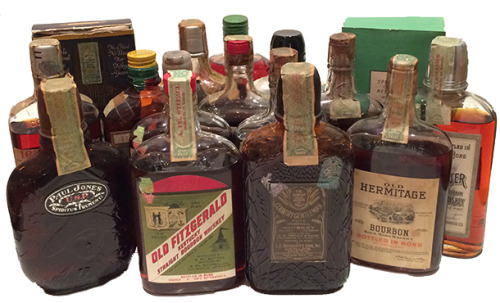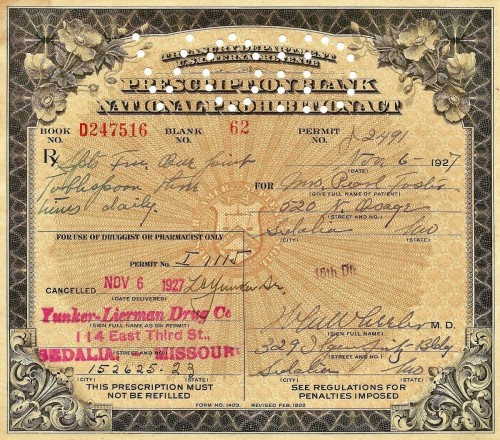Prohibition Era Medicinal WhiskeyWith the passing of the Volstead Act and 18th Amendment in 1920, th
Prohibition Era Medicinal WhiskeyWith the passing of the Volstead Act and 18th Amendment in 1920, the production, sale, and transportation of alcoholic beverages became illegal in the United States. However, the Volstead Act was not absolute, and there were a few exceptions to the law. The first was a religious exemption, which permitted religious organizations to produce wine for ceremonial purposes. The second was for farmers, who were permitted to a certain amount of wine from their crops for personal consumption. Finally there was a medicinal exemption.In the 18th and 19th century alcohol was believed to have numerous medicinal and therapeutic properties, treating almost any illness and ailment. However by the beginning of the 20th century modern medical science had debunked the supposed medicinal properties of alcohol. Regardless, the Volstead Act included a medical exemption, issuing licenses to six large distillers to produce whiskey and brandy for medicinal purposes. A number of other licenses were issued in response to a rise in demand for medicinal whiskey during prohibition. In order to get legal medicinal whiskey, one would have to receive a prescription from a doctor. The prescription was filled out on a special prescription form issued by the government. The prescription could then be filled by a local pharmacy. “Patients” were only permitted 1 pint every ten days.Not all of those who bought medicinal whiskey during prohibition were sick people. Many people who were prescribed medicinal whiskey were simply trying a legal way to obtain booze. If you personally knew a doctor, or went to a doctor who wrote scripts out to anybody, you could easily pretend to be sick (cough, cough) and with a wink and a nod the doctor would hook you up with some liquor.Today prohibition era medicinal whiskey is highly collectible among antiquers and fine whiskey connoisseurs, with bottles selling for hundreds or even thousands of dollars a piece. Most collectors never intend to open and consume their collectibles. Recently the LA Whiskey Society held a sampling of 16 different brands of prohibition era medicinal whiskey, describing the taste of all to be much different from whiskey today, and rated them “good” to very “good”. Keep in mind that medicinal whiskey tended to be cheap bottom shelf swill. As one of the samplers put it, “Whiskey just isn’t made like this any more”.http://www.lawhiskeysociety.com/pages/Medicinal-Whiskey-Prohibition-Tasting -- source link
Tumblr Blog : peashooter85.tumblr.com
#history#prohibition#health care#antiques#liquor#whiskey#medicine

